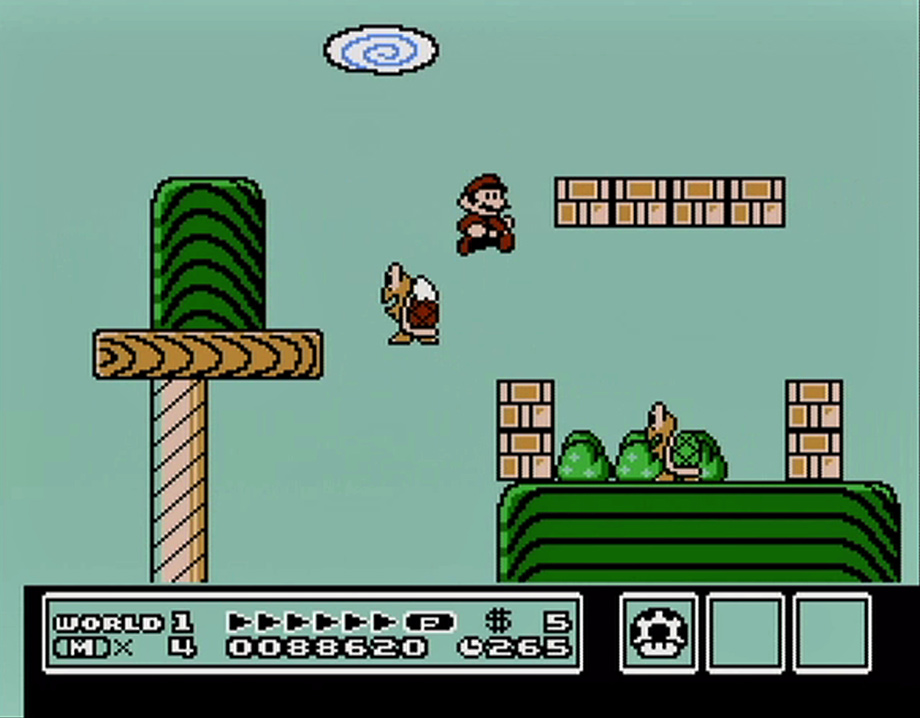- Open today, 10 am to 5 pm.
- Parking & Directions
- Free Admission
The Art of Video Games
February 14, 2015 — May 10, 2015
Past Exhibition
The Chrysler presents an exhibition that does more than trace 40 years of creative artistry and technological advances in digital entertainment. It poses the question of whether video games deserve to be considered art.
You will certainly see artistic influences—hints of M.C. Escher in Marble Madness, or Wassily Kandinsky in Rez. There are video game lighting algorithms based on the way J. C. Leyendecker and Norman Rockwell accentuated their shading techniques with rim highlights. And for centuries, art has told stories. There are certainly stories here, and what makes the story complete in this genre is the player. In other words, you.


The show, organized by the Smithsonian American Art Museum, traces five eras of progress, each with four categories of games. Consider it a story arc that starts with Space Invaders on an Atari, progresses to The Legend of Zelda on a Nintendo, and evolves to the graphically rich epics now available on PlayStation and other platforms.
You don’t have to remember Mutant Camels, Earthworm Jim or Sonic the Hedgehog to appreciate this exhibition, and if you’re brand new to the field, you’ll have a chance to play Pac-Man, Super Mario Bros., The Secret of Monkey Island, Myst, and Flower as part of the exhibition.


The exhibit’s curator, Chris Melissinos of Past Pixels, asked for public input while selecting games to be included in the show. He presented 240 possible games, and reached the final selection after 3.7 million votes from 119,000 people from 175 countries.
After touring the show, you can see every game in the exhibition on the big screen of our Kaufman Theater. From noon to 5 p.m. every day, we play the 80 game-explaining clips super-sized. They are also available via push-buttons and handsets on the exhibition’s 20 display stands.
The Art of Video Games was organized by the Smithsonian American Art Museum with generous support from the Entertainment Software Association Foundation, Sheila Duignan and Mike Wilkins; Shelby and Frederick Gans, Mark Lamia, Ray Muzyka and Greg Zeschuk; the Rose Family Foundation, Betty and Lloyd Schermer, and Neil Young. The C.F. Foundation in Atlanta supports the museum’s traveling exhibition program, Treasures to Go.
Credits
Super Mario Brothers 3, Shigeru Miyamoto, Takashi Tezuka, Hiroshi Yamauchi, directors; Satoru Iwata, executive producer; Konji Kondo, composer, Nintendo Entertainment System, 1990, Nintendo of America, Inc.
The Legend of Zelda: Twilight Princess, Shigeru Miyamoto, executive producer; Eiji Aonuma, director; Satoru Takizawa, art director; Eiji Aonuma, Satoru Iwata, producers, Nintendo Wii, 2006, Nintendo of America, Inc.
Heavy Rain, David Cage, writer and director, PlayStation 3, 2010, Sony Computer Entertainment America LLC.
Shenmue, Yu Suzuki, director and producer; Yoichi Takahashi, designer; Eiji Ogawa, writer, SEGA Dreamcast, 2000, © SEGA. All rights reserved.
On view right now

2024 Fall Glass Studio Assistant Exhibition
Exhibition Details

Peter Bremers: Ice to Water
Exhibition Details

